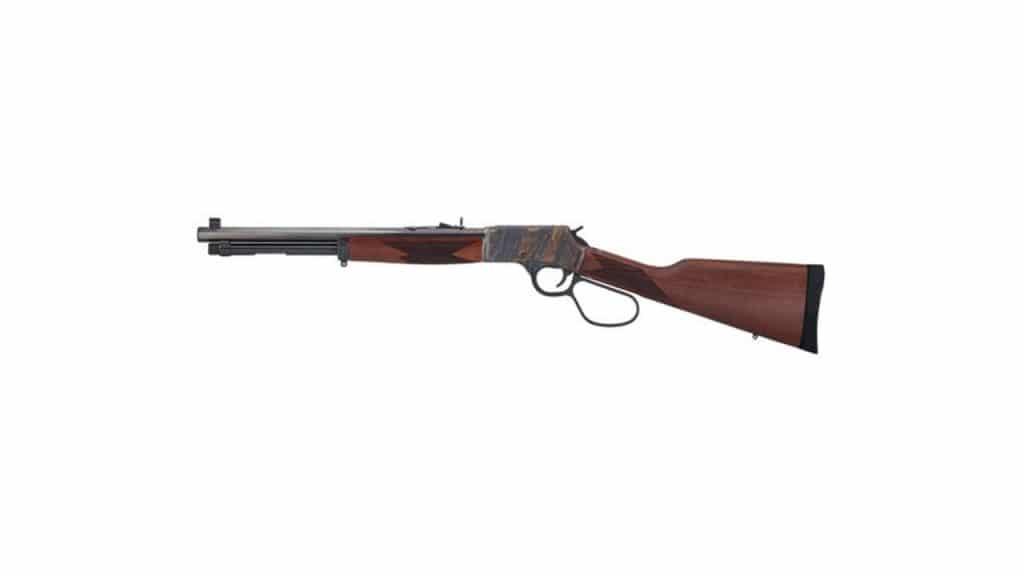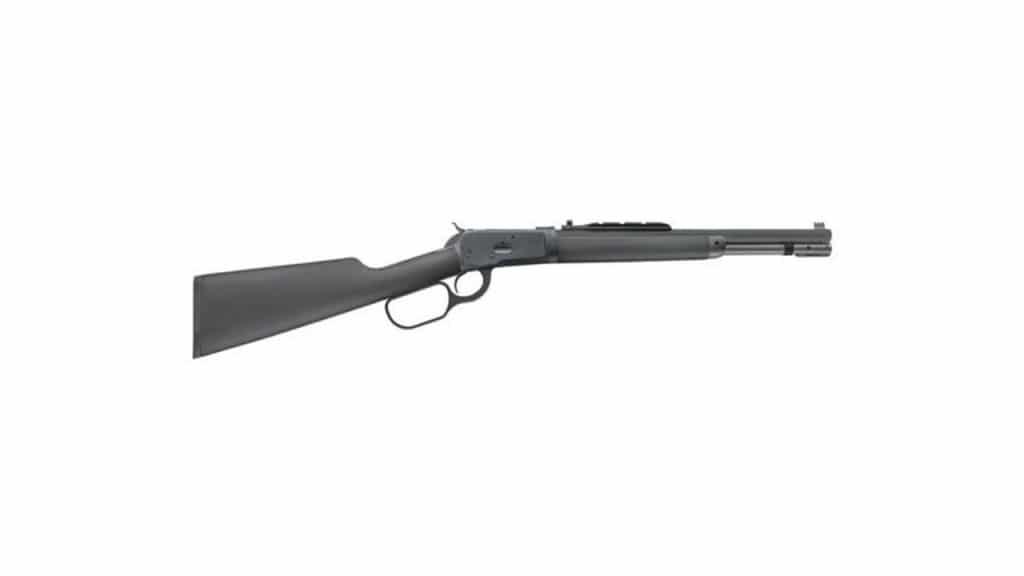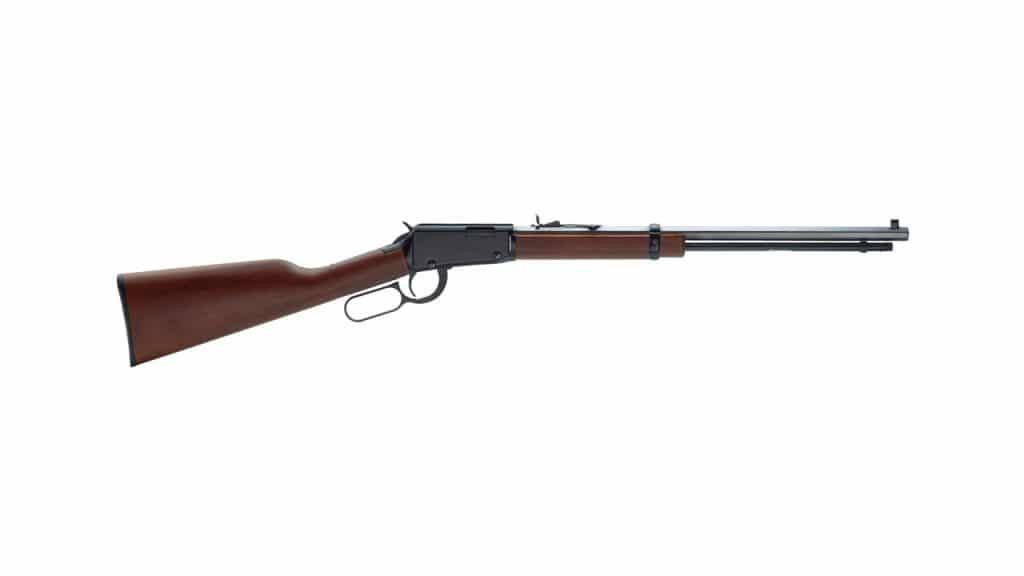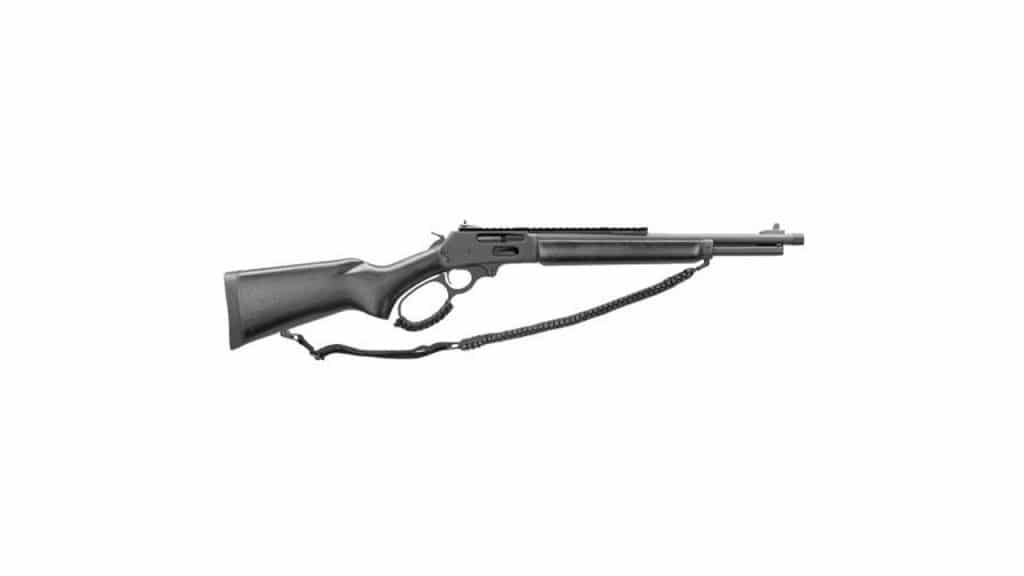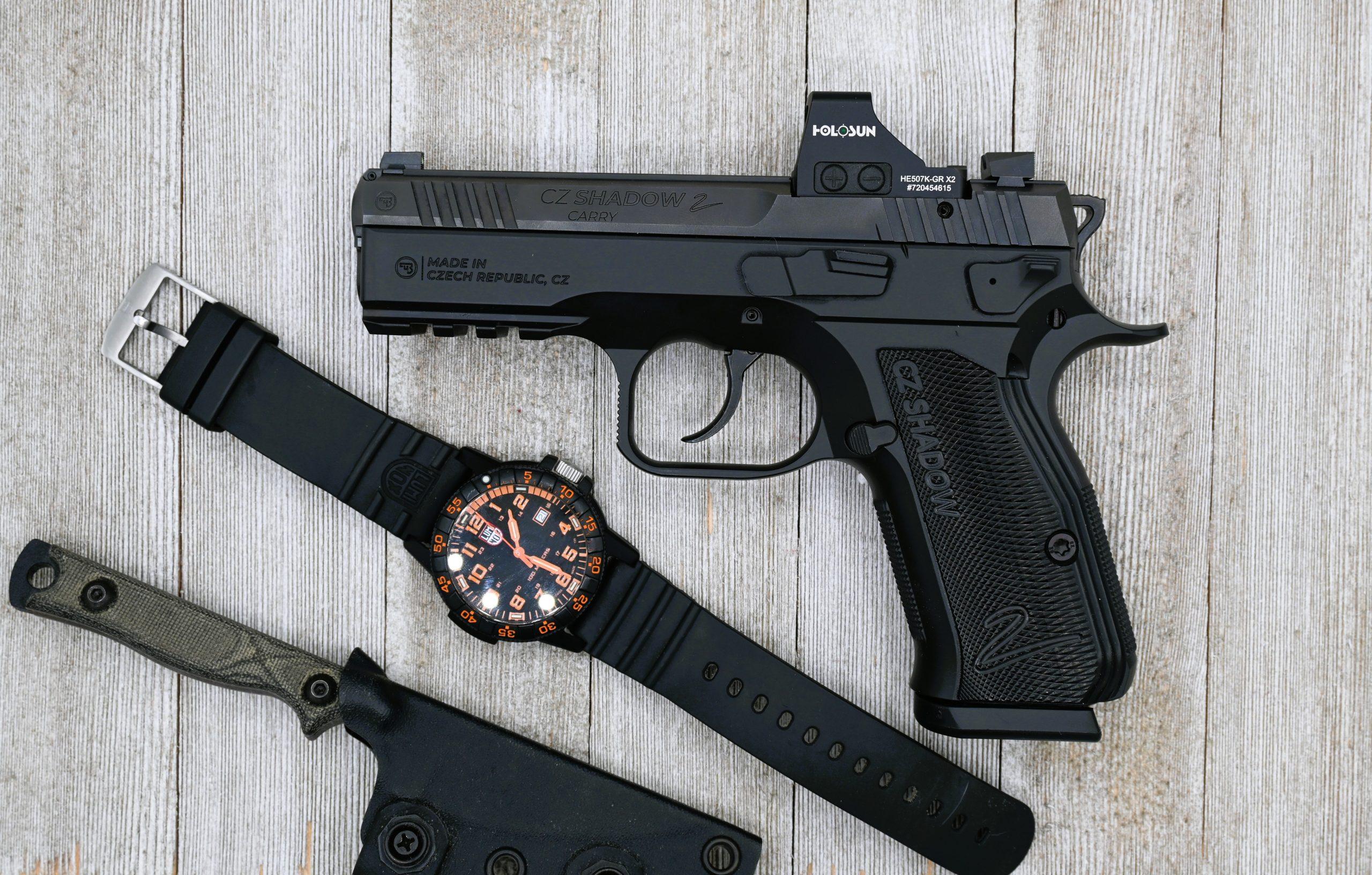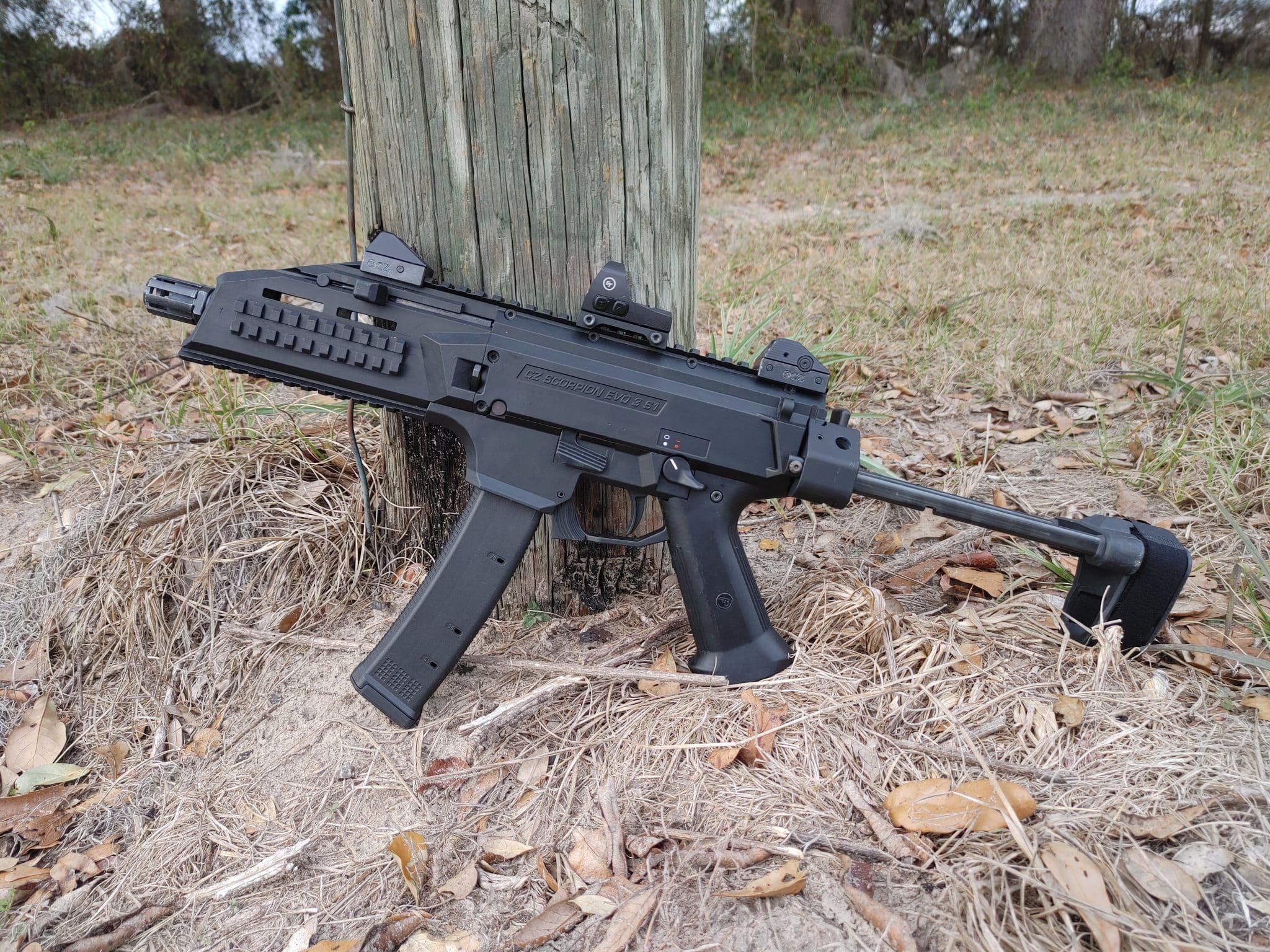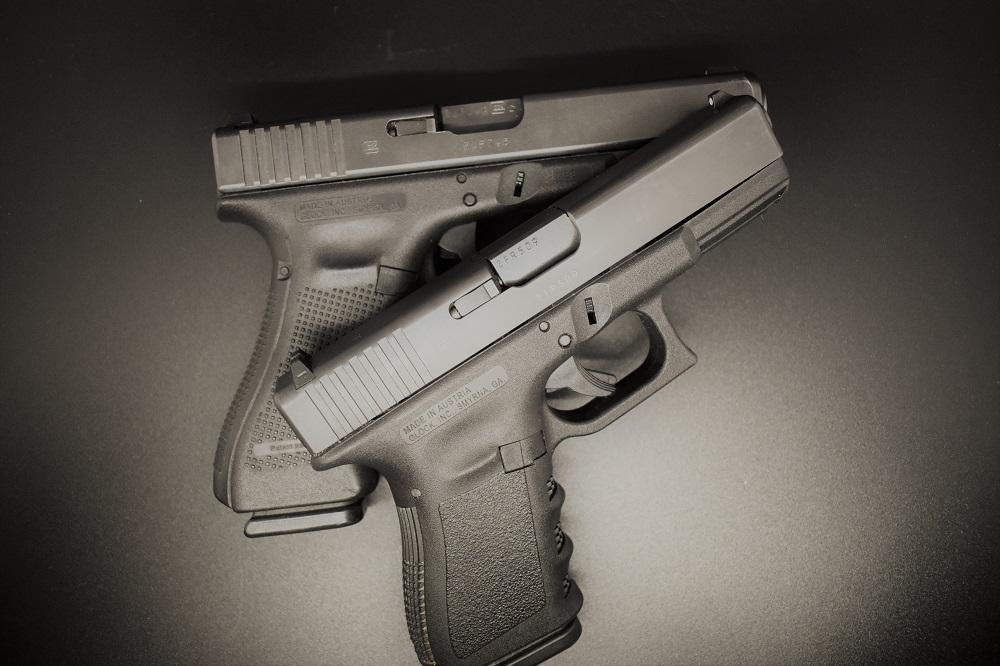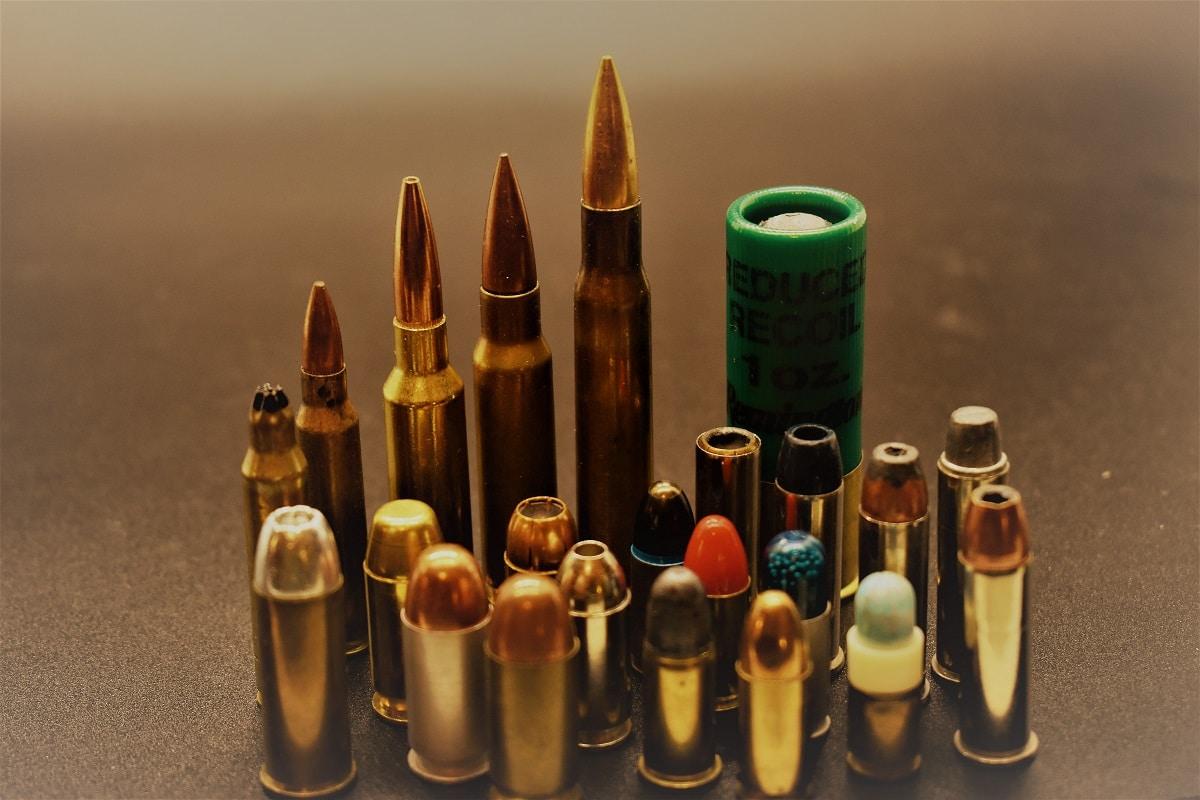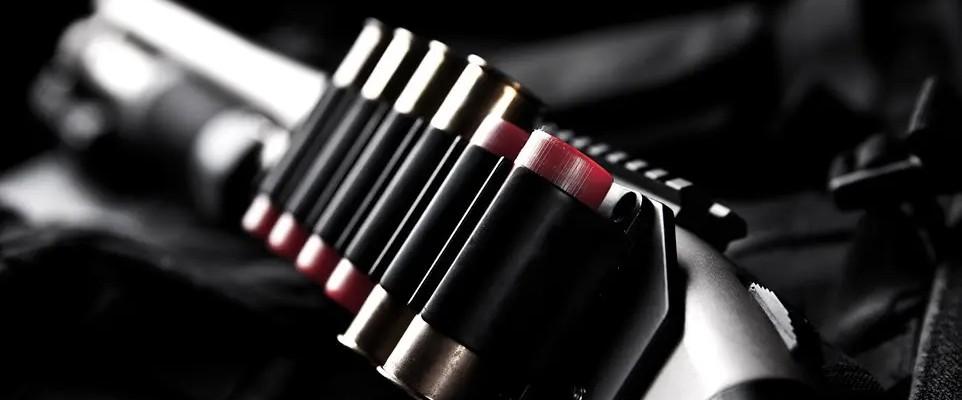Best Lever-Action Rifles: From Classic To Cutting-Edge
Written By
Michael Crites
Licensed Concealed Carry Holder
Reviewed by
Editorial Team
Learn About The Editorial Team
Share:
Products are selected by our editors. We may earn a commission on purchases from a link. How we select gear.
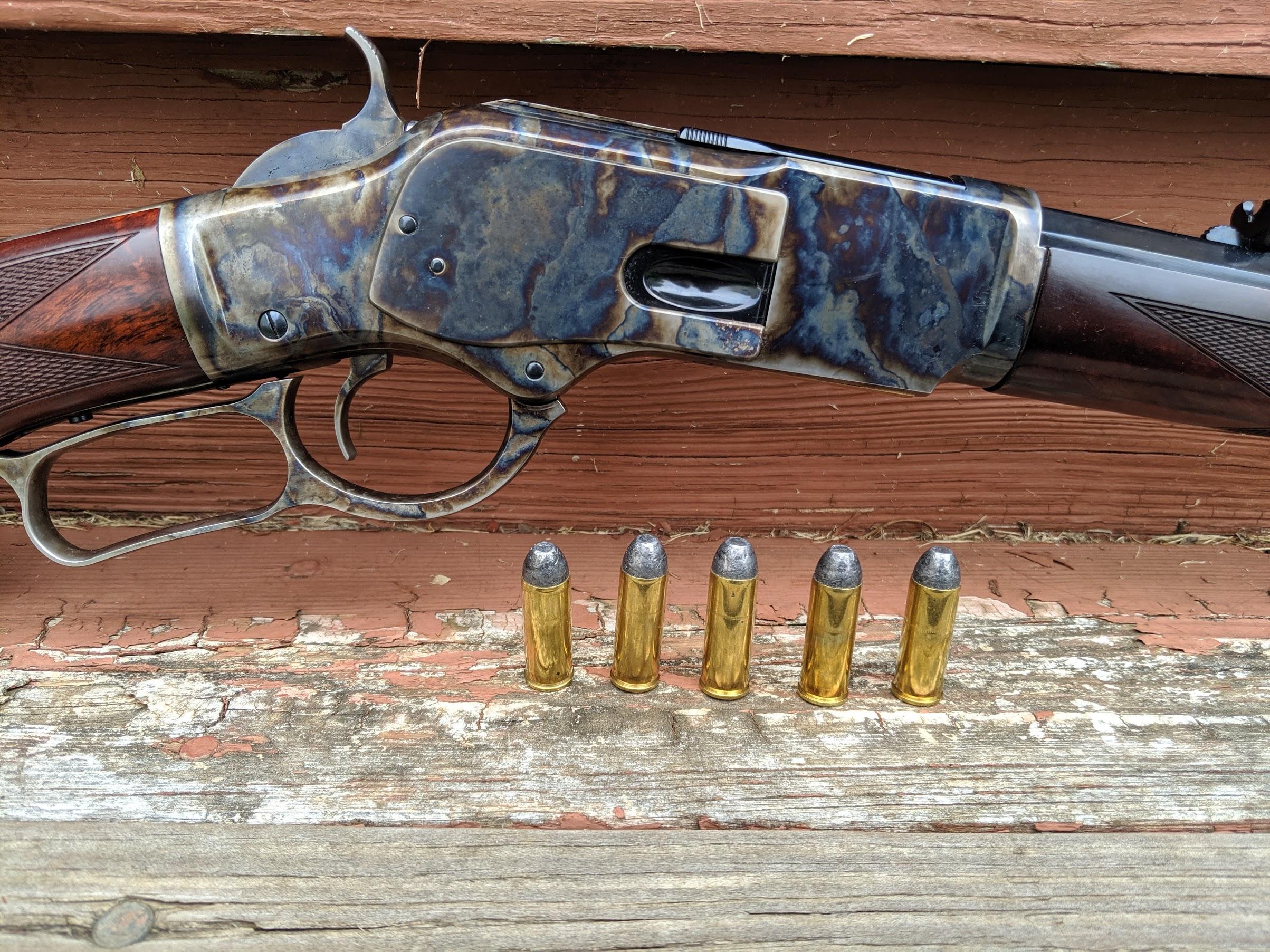
Updated
Jun 2025
Few firearms capture the imagination quite like lever-action rifles. A Winchester 94 with a walnut stock and pistol grip was one of the iconic guns that helped win the American West. Over a century since the settling of the frontiers, these guns are still relevant, beautiful, and practical — and as of late, few types of rifles have experienced the same resurgence of popularity as the humble lever action.
Whether used for taking big game as guide guns, seeing service during deer season, or providing fast follow-up shots in tactical applications, these firearms might be classic in design, but they can be incredibly practical as well. Modern lever-actions now bridge the gap between nostalgic heritage and cutting-edge performance, with options ranging from traditional wood and steel beauties to tactical variants sporting rails, suppressors, and modern materials.
Today’s lever-action market offers something for everyone: budget-conscious hunters seeking reliable .30-30 carbines, collectors drawn to faithful reproductions of Wild West legends, and tactical enthusiasts exploring innovative designs that bring lever guns into the 21st century. From Henry’s brass-framed Golden Boys to Marlin’s modernized Dark Series, manufacturers are reimagining what a lever-action can be while respecting what it has always represented.
In this comprehensive guide, we’ve evaluated the best lever-action rifles currently available, testing everything from classic hunting configurations to modern tactical variants. Our selections span multiple price points and use cases, ensuring there’s an ideal lever gun for your specific needs — whether you’re a first-time buyer or a seasoned collector adding to your arsenal.
Let’s dive into the rifles that prove the lever-action’s enduring relevance in modern shooting sports.
In This Article
How We Test
Accuracy
We test fire four 5-round groups from a bench at 50 yards to evaluate accuracy potential, then measure shot groupings to assess consistency and precision.
Reliability
We fire a minimum of 100 rounds through each rifle using multiple ammunition types (factory loads and various bullet weights) to ensure consistent feeding, extraction, and ejection.
Build Quality
We evaluate the fit and finish of all components, including wood-to-metal fitment, receiver machining quality, and overall craftsmanship.
Handling
We test each rifle’s balance, weight distribution, and shoulder-ability across different shooting positions.
More on our testing process
Lever Action Rifle Comparison
| Name | Rating | Price |
|---|---|---|
Best Overall | $899 | |
Premium Option | $1,249 | |
Budget Pick | $429 | |
Best Tactical Lever Gun | $875 | |
Best Classic Design | $699 | |
Best for Hunting | $799 |
This lever gun by Henry Repeating Arms represents an update on a classic design. One classic feature — aside from the fact that it’s iron-sighted — is that it retains the availability to fire pistol calibers.

Specifically, this lever-action is available chambered in .44 magnum, .357 magnum, or .45 Long Colt, and firing pistol-caliber rounds is a classic Wild West feature. If you already have a revolver in one of those calibers, you can match it to your lever gun and all you need is a single box of ammo and a 10-gallon hat.
With an eight-round capacity and open sights, this is a more than capable long gun for hunting small to medium game. Additionally, the walnut stock looks handsome against the dark steel frame. Loading is easy, as this, like most modern takes on bolt actions, loads through the side gate.
For an even more modernized take on the lever-action, this entry from Taylor’s and Company is an excellent option. You’ll immediately notice the stainless steel receiver and polymer furniture, a pretty stark visual contrast from the 19th-century roots of the design. There’s also a section of Picatinny rail on this gun for mounting optics.
The real trick here is the fact that this is a takedown model. That is to say, the barrel comes off the receiver in just a few seconds. That makes this the perfect backpacking gun, and the .44 and .357 magnum rounds would be perfect for either hunting or if need be, defense from a bear or some other wildlife.
Most of the guns on this list are big bores meant for relatively long range. If you’re thinking about getting a lever-action as a first gun, or to give as a gift to a young person interested in the old west, this offering from Henry is great.
Coming with a 20” barrel and a gorgeous combination of a blued receiver and walnut stock, this .22 would be an ideal rifle to learn to shoot one. Holding 15 rounds of 22 LR ammunition, this great-looking and shooting rifle is a great way to introduce people to this fascinating type of firearm.
Onto a much bigger bore, in this case, .45-70, the Marlin Dark is a modern interpretation of the lever-action design. This particular model comes with a healthy Picatinny rail section added to the pre-drilled and tapped receiver. This allows for the mounting of any modern optic you’d like: a variable power optic or a red dot commonly serve on these rifles.
The chrome and black finish is sleek and durable, making this a good outdoor gun. Not content to be a safe queen, this one has a sling right in the box. This rifle is practically begging to be taken into the woods for some hunting in rough conditions.
The most classic interpretation of the lever-action on this list is this one, Taylor’s model 1873. This is an update on an old Winchester design but made with modern machining and quality.
The gorgeous blued receiver and hardwood, pistol grip stock look great. Beyond looks, these 10-round, .357 chambered rifles run as slick as they look. This is an ideal rifle for those looking to get into cowboy action shooting and are looking for a gorgeous rifle with which to start.
As far as hunting rifles go, the Marlin Dark 336 is an excellent choice. This rifle, chambered in the 30-30 cartridge, is about the perfect brush gun. With a short 16.25” barrel and clear, open sights, this comes ready to hunt out of the box. There’s also a lot of rail space up top should you choose to mount an optic, Fit and finish wise, the all-black look is a contemporary take on an old design, proving that lever-action rifles can still fill a role in the 21st century.
Lever-Action Buying Guide
First-Time Lever Gun Considerations
If you’re new to lever-action rifles, start by defining your primary use. For hunting whitetail in thick cover, a classic .30-30 carbine like the Marlin 336 offers proven performance and manageable recoil. New shooters often benefit from starting with a .22 LR lever gun—they’re affordable to shoot, nearly recoilless, and let you master the unique manual of arms without developing a flinch.

Consider your local hunting regulations, too. Many states have straight-wall cartridge requirements for certain zones, making rounds like .44 Magnum, .45-70, or the newer 360 Buckhammer excellent choices that deliver serious knockdown power within legal parameters.
Modern vs. Traditional Features
Traditional lever guns feature wood stocks, blued steel receivers, and tubular magazines—timeless aesthetics that never go out of style. Modern variants often include synthetic furniture, stainless steel construction, threaded barrels for suppressors, and Picatinny rails for optics mounting.
The choice depends on your intended use. Classic hunters and collectors gravitate toward traditional styling, while those seeking versatility and weather resistance often prefer modern features. Some rifles, like Henry’s X Model series, successfully blend both approaches with traditional lever operation enhanced by contemporary materials and mounting options.
Caliber Selection Guide
For deer-sized game: .30-30 Winchester remains the gold standard, offering flat trajectory out to 150 yards with manageable recoil. The .35 Remington hits harder but drops more, making it ideal for thick woods hunting.
For larger game: .45-70 Government delivers tremendous stopping power, perfect for elk, bear, or dangerous game situations. Modern loadings can push this 150-year-old cartridge to impressive velocities.
For versatility: Pistol calibers like .357 Magnum and .44 Magnum allow you to share ammunition between your lever gun and revolver, while offering excellent performance on medium game.
For beginners: .22 LR provides affordable practice and small game capability, while .22 WMR steps up the power for varmints and predators.
Budget Considerations
Entry-level lever guns start around $400-600 for quality rimfire options and basic centerfire models. Mid-range rifles ($700-1,200) offer better fit and finish, often featuring upgraded wood and improved manufacturing tolerances. Premium models ($1,200+) provide exceptional craftsmanship, often with enhanced features like takedown capability, custom-grade wood, or specialized finishes.
Remember to factor in ammunition costs—.45-70 can run $3+ per round, while .30-30 typically costs under $2 per shot. For high-volume shooting, consider pistol calibers, which generally offer more affordable practice.
The sweet spot for most buyers sits in the $700-1,000 range, where you get solid reliability, good accuracy, and features that enhance the shooting experience without breaking the bank.
History of the Lever Action Rifle
As a general design, lever-actions date back to the 1820s with a series of Italian revolvers, famous for being one of the first actions capable of shooting “six rounds in under six seconds.”
From there, the idea spread to the United States, with prototypes appearing in the decades following.
You’ve likely heard of the companies that ended up creating the innovative lever designs. Winchester’s famous Model 1873, the Henry Rifle, Marlin’s Model 1881 were all designs that functioned similarly: large bore rounds loaded with a lever from a tubular magazine.

Colt’s cap-and-ball Model Ring Lever rifles, however, used a cylindrical magazine similar to a revolver and a loading lever to index the next position and cock the hammer.
During the American Civil War, Spencer rifles saw limited service in the closing years of the war, with the Union seeing the benefits to the individual rifleman being able to substantially increase his volume of fire. This adoption by Union forces was noteworthy as the first adoption of an infantry and cavalry rifle with a removable magazine.
After the war, the US Army continued to use lever actions for about two decades, until the adoption of the first bolt action rifle in 1892. Soldiers and civilians alike continued to find lever actions handy rifles, often shooting the same bullets as their handguns.
Beyond the eventual development of reliable semi-automatic rifles pushing lever guns out to pasture, the replacement of the otherwise much-liked rifles was sped along by the advent of smokeless powder and the Spitzer bullet, which helped usher in the era of modern ammunition.
When lever actions were invented, bullets, mostly, had round noses. This means stacking them end-to-end in the tube magazines of most lever actions posed no danger.
Spitzer bullets, on the other hand, are pointed. This means that stacked end to end, there’s a possibility of an out-of-battery detonation, causing grave injury to the shooter. Add to this the increased pressures of smokeless powder, and the bolt action’s end in military service soon followed.
Bolt actions, with their internal en-bloc magazines, could hold as many rounds as their lever-action predecessors, and get them downrange just as quickly, but without the engineering shortcomings of lever guns. This led to the widespread adoption of bolt actions the world over.
Today, lever actions are used mostly by hunters and sport shooters: modern variants include all the mounting goodies for scopes and suppressors, making them truly modern rifles.
Why Choose a Lever Action?
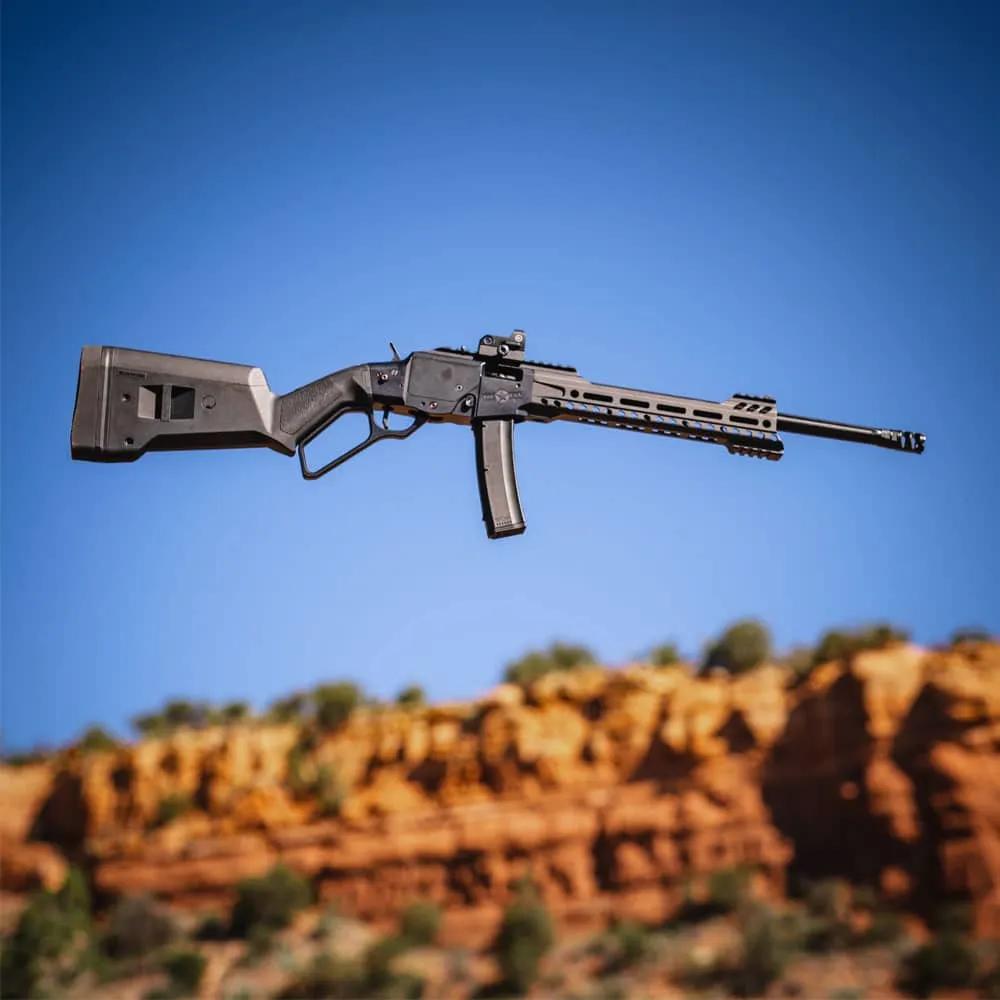
There are several compelling reasons to choose a lever-action rifle in today’s shooting landscape. First and foremost, they offer a novel shooting experience compared to what most people are used to. That novelty is what draws a lot of folks to lever actions in the first place—there’s something undeniably satisfying about working that lever and hearing the distinctive mechanical symphony of extraction, ejection, and chambering.
Practical Advantages
The diverse array of chamberings can make lever guns part of a slick shooting system. If you hunt in areas where you may need to quickly dispatch wounded game or defend yourself from predators, carrying both a pistol on your hip and a rifle on your back makes perfect sense. When both firearms fire the same cartridge—say .44 Magnum or .357 Magnum—you only need to carry a single ammunition type into the field, simplifying logistics and reducing weight.
Those same rounds, usually pistol calibers, also suppress exceptionally well in their subsonic formats. Several new models of lever-action include threaded barrels, making suppressor use a natural fit. The ability to cycle the action manually also cuts down on bolt noise, making lever guns excellent suppressor hosts for those seeking a quieter shooting experience.
Lever guns are also naturally ambidextrous, giving them a significant advantage over bolt-action rifles when it comes to user-friendliness. Left-handed shooters can operate them just as efficiently as right-handed shooters, without the awkward reach-around required by traditional bolt guns.
Speed and Versatility
In skilled hands, a lever-action can deliver remarkably fast follow-up shots. The lever throw keeps your firing hand in position while your support hand works the action, maintaining sight picture and target engagement. This makes them excellent for situations requiring quick successive shots on moving game or multiple targets.
Modern lever guns bridge the gap between traditional hunting rifles and tactical applications. Today’s variants include all the mounting hardware for scopes and suppressors, plus materials and finishes that can handle serious field use. They’re no longer relegated to the nostalgic corner of the gun safe—they’re legitimate tools for contemporary shooters.
Legal Considerations
In some jurisdictions with restrictive gun laws, lever-actions may face fewer regulations than semi-automatic rifles while still providing relatively high capacity and fast operation. This legal advantage, combined with their proven effectiveness, has contributed to their recent resurgence in popularity.
Whether you’re drawn by nostalgia, practicality, or pure shooting enjoyment, lever-actions offer a unique combination of heritage and performance that few other rifle types can match.
Caliber Guide & Ballistics
Choosing the right caliber for your lever-action rifle depends heavily on your intended use, local hunting regulations, and personal preferences. Modern lever guns offer an impressive range of cartridge options, from mild-mannered rimfires to bone-crushing dangerous game rounds.
Traditional Rifle Cartridges
The .30-30 Winchester remains the undisputed king of lever-action cartridges. Introduced in 1895 alongside the Winchester Model 94, this round has probably accounted for more whitetail deer than any other cartridge in North America. Its moderate recoil, flat trajectory out to 150 yards, and widespread availability make it an excellent choice for most hunting situations.
The .35 Remington steps up the power considerably, delivering heavier bullets with more stopping power at the expense of increased trajectory drop. It’s particularly effective in thick cover where shots rarely exceed 100 yards, and the larger diameter bullet tends to leave better blood trails.
| Cartridge | Bullet Weight | Muzzle Velocity | Energy (ft-lbs) | Effective Range |
|---|---|---|---|---|
.30-30 Winchester | 150gr | 2390 fps | 1903 | 200 yards |
.30-30 Winchester | 170gr | 2200 fps | 1827 | 175 yards |
.35 Remington | 200gr | 2080 fps | 1921 | 150 yards |
Pistol Cartridges in Rifles
One of the unique advantages of lever-action rifles is their ability to chamber handgun cartridges effectively. The longer barrel length significantly boosts velocity and energy compared to the same rounds fired from revolvers.

The .357 Magnum/.38 Special combination offers excellent versatility. You can practice affordably with .38 Special loads, then step up to full-power .357 for hunting. The .44 Magnum provides substantially more power, making it suitable for larger game, while .45 Colt delivers similar energy with a larger diameter bullet.
| Cartridge | Revolver Velocity | Rifle Velocity | Energy Gain | Best Applications |
|---|---|---|---|---|
.357 Magnum | 1400 fps | 1800 fps | +65% | Deer hogs defense |
.44 Magnum | 1300 fps | 1750 fps | +80% | Large game bear defense |
.45 Colt | 1000 fps | 1400 fps | +95% | Hunting cowboy action |
Big Bore Powerhouses
For serious big game or dangerous game situations, few cartridges match the .45-70 Government. This Civil War-era round has been modernized with contemporary powders and bullets, delivering devastating performance on everything from elk to African plains game.
Modern .45-70 loadings range from mild 1,800 fps “trapdoor safe” loads suitable for older rifles, to full-power 2,100+ fps loads that turn lever guns into genuine dangerous game rifles. The key is matching your ammunition to your rifle’s strength—modern Marlins and Henrys can handle the hottest loads, while reproductions of older designs should stick to moderate pressures.
Modern Innovations
The 360 Buckhammer represents the newest thinking in lever-action cartridges. Developed by Remington in collaboration with Henry, this straight-wall cartridge was designed specifically for states with restrictions on bottlenecked rifle cartridges. It delivers .30-30-class performance while meeting legal requirements, making it an excellent choice for restricted hunting zones.
Rimfire Options
Don’t overlook rimfire cartridges for lever guns. The .22 LR remains incredibly popular for training, small game hunting, and pure recreational shooting. The .22 WMR (Winchester Magnum Rimfire) steps up the power considerably, making it effective on varmints and predators out to 125 yards.

Shortcomings of Lever Rifles
While lever actions are great, a general truism for all firearms is that they fall short on several fronts. Lever guns are no exception.
The first shortcoming is capacity. Nowadays, we are used to 30 rounds of a defensive caliber being the standard. Most lever guns hold fewer than ten. While this is, hopefully, more than enough for most situations, it could leave one waiting for more in serious defensive situations.
A second shortcoming is chambering. Finding a lever gun in .308, 30-06, or more powerful, long-range appropriate cartridges is hard. This is part of the reason that many militaries switched to bolt guns, as did many hunters.
Modern pistol cartridges and the new versions of older rifle rounds are great, but it’s hard to beat the global military standards.
Also – lever guns are difficult to shoot when prone. This puts a damper on field performance when you may only have one shot — and prone shooting is generally the easiest and most accurate position, thanks to the added stability the ground provides.
With those caveats in mind, lever guns, when used for reasonable hunting and range shooting tasks, are great options, full of history, and more than worth your time.
More Reading
- Review of Italian Patents, 1826, Recorded in a journal of science from the era.
- Luke Mercaldo et al, Allied Rifle Contracts in America
- Chuck Hawks, the 8mm Lebel
- The National Museum of American History, the Spencer Carbine
Updated
June 10, 2025 — We’ve restructured this guide with new sections including a comprehensive buying guide, detailed testing methodology, and expanded caliber/ballistics information.
Sign up for our newsletter
Get discounts from top brands and our latest reviews!

